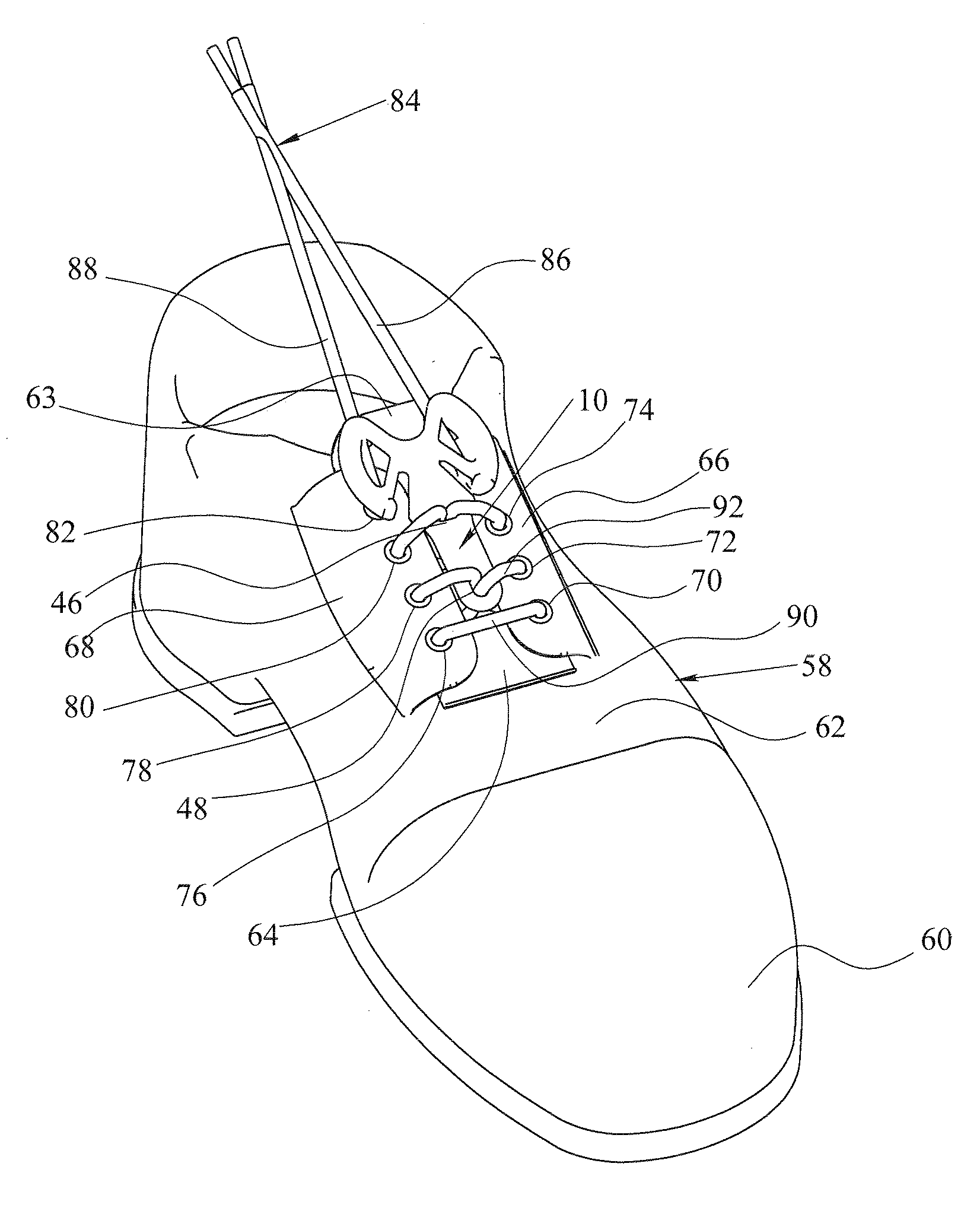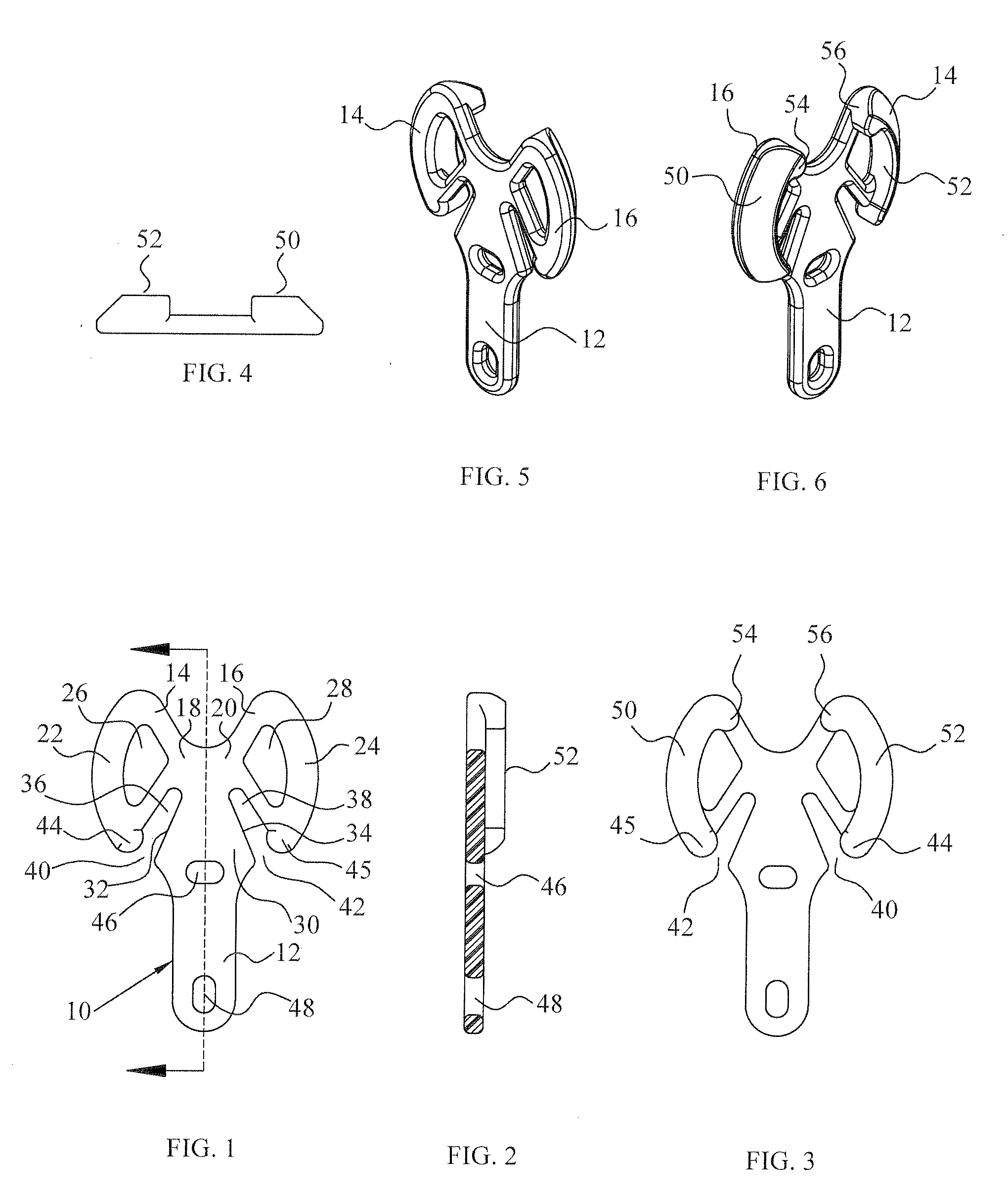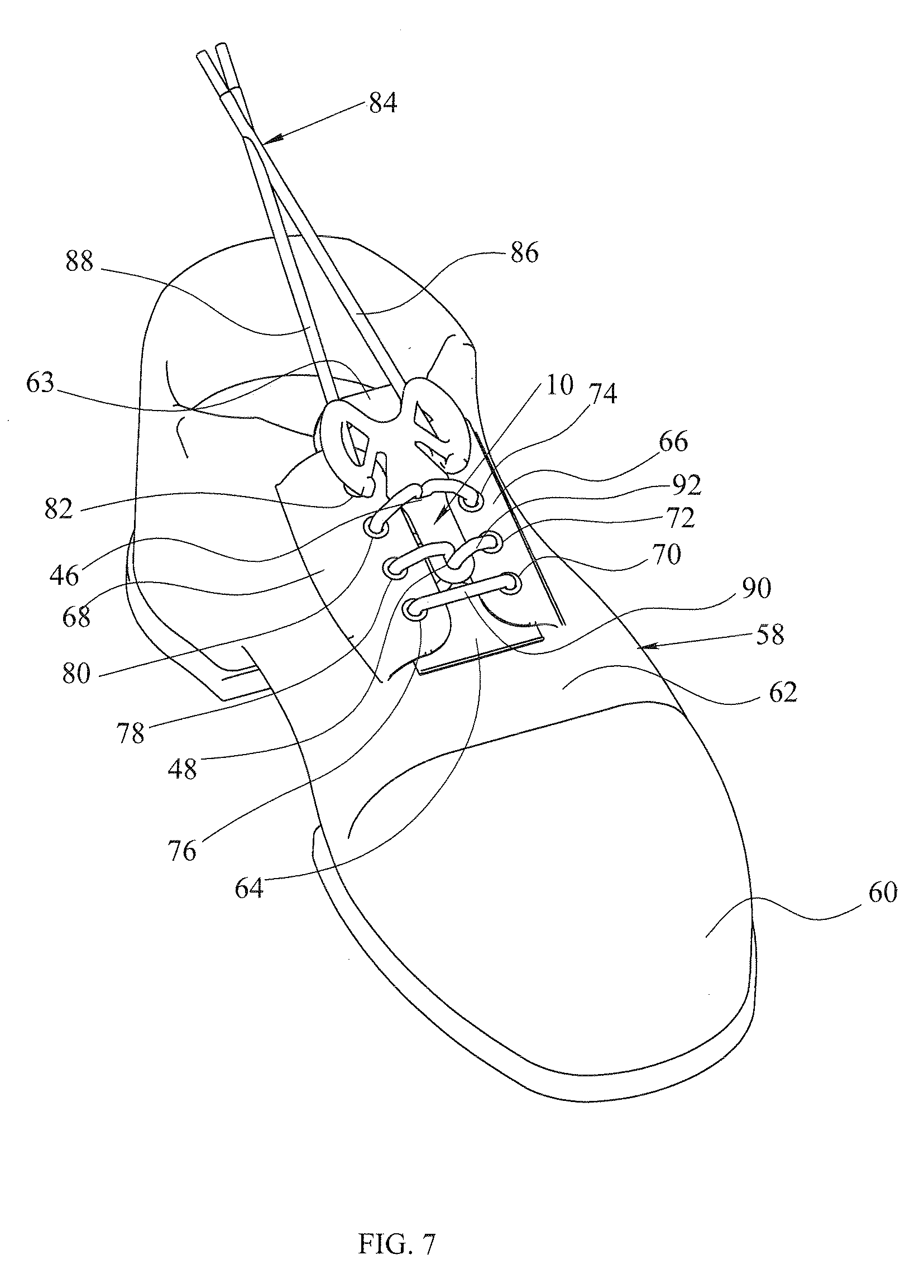Shoe tying aid and method
a shoe lace and shoe technology, applied in the field of shoe lace tying aids and methods, can solve the problems of lost hand use, inability to tie shoes by themselves, and lack of manual dexterity of young children to tie shoes, etc., and achieve the effect of simple and effectiv
- Summary
- Abstract
- Description
- Claims
- Application Information
AI Technical Summary
Benefits of technology
Problems solved by technology
Method used
Image
Examples
Embodiment Construction
[0026]As mentioned above, the invention is practiced by the use of a tying aid. The tying aid 10, shown in FIGS. 1-6 is preferably a unitary, substantially rigid, element molded from a suitable low friction polymer such as recycled ABS (acrylonitrile butadiene styrene) or recycled polycarbonate. It comprises a leg 12 having ears 14 and 16 protruding laterally from one of its ends. The ears have narrow inner parts 18 and 20 connected to the leg, and larger outer parts 22 and 24. For weight reduction, the ears can be formed with openings 26 and 28.
[0027]The leg is formed with a tapered portion 30 which extends from a location at which it meets the narrow parts 18 and 20 of said ears toward the end of the leg remote from the ears. The side edges 32 and 34 of portion 30 of the leg diverge with respect to each other from the location at which it meets the narrow parts of the ears. An oblique slot 36 is formed between side edge 32 and ear 14, and a similar oblique slot 38 is formed betwee...
PUM
 Login to View More
Login to View More Abstract
Description
Claims
Application Information
 Login to View More
Login to View More - R&D
- Intellectual Property
- Life Sciences
- Materials
- Tech Scout
- Unparalleled Data Quality
- Higher Quality Content
- 60% Fewer Hallucinations
Browse by: Latest US Patents, China's latest patents, Technical Efficacy Thesaurus, Application Domain, Technology Topic, Popular Technical Reports.
© 2025 PatSnap. All rights reserved.Legal|Privacy policy|Modern Slavery Act Transparency Statement|Sitemap|About US| Contact US: help@patsnap.com



